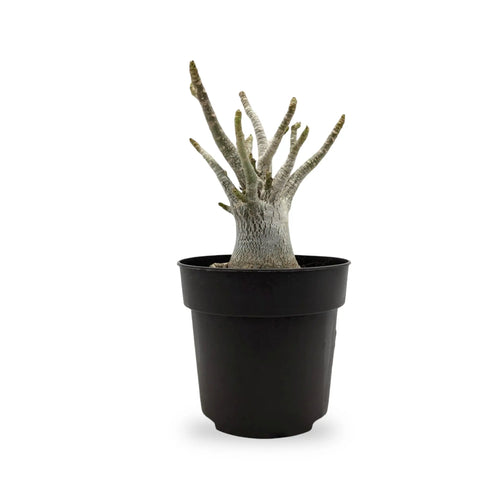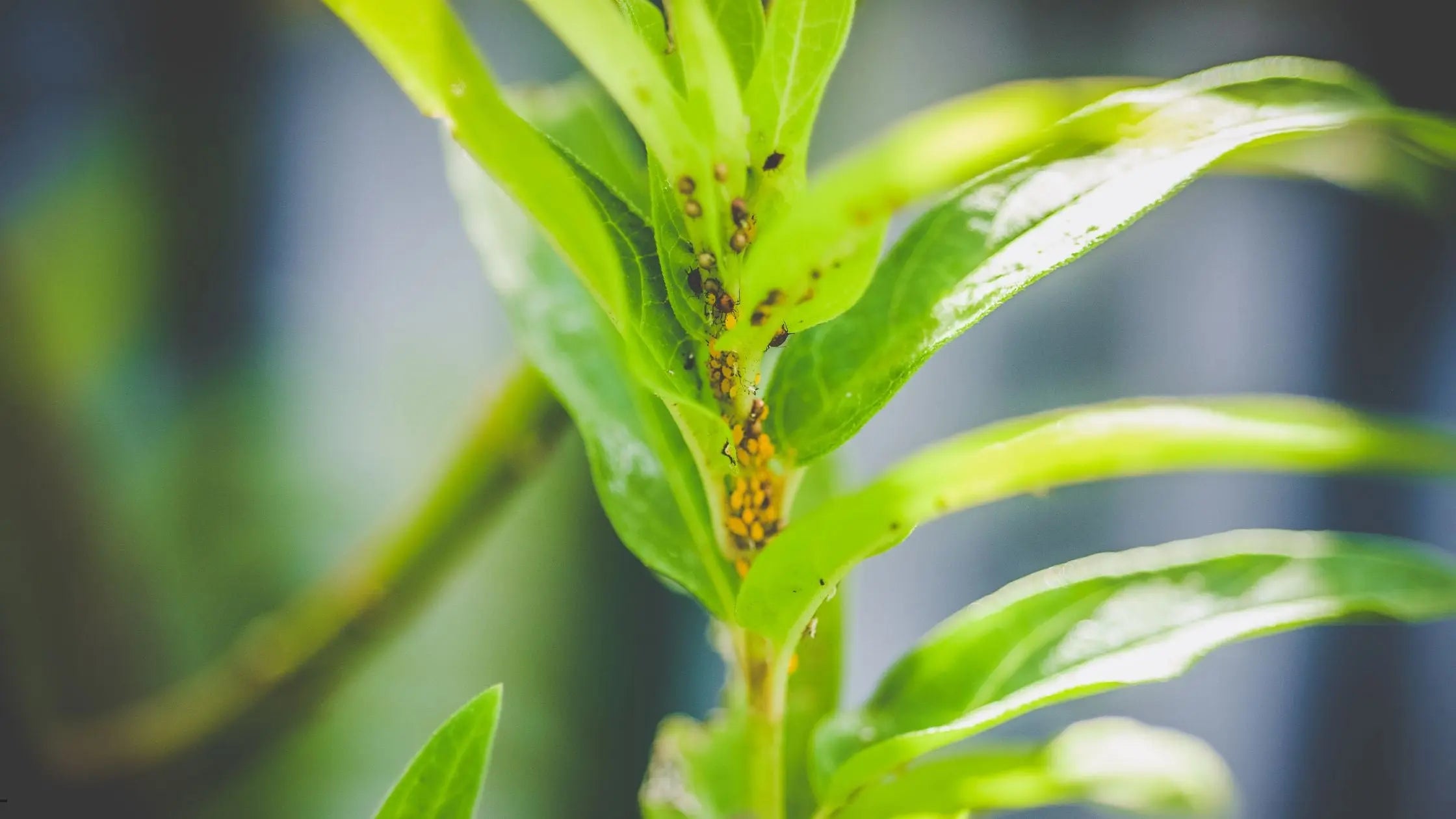Aphids are a common challenge for plant enthusiasts, especially when it comes to maintaining healthy indoor houseplants. These tiny pests can quickly infest your plants, causing significant damage if left unchecked. Understanding their lifecycle, the harm they cause, and effective methods for controlling them is essential for keeping your indoor greenery thriving.
What Are Aphids?
Aphids are small, soft-bodied insects that belong to the family Aphididae. Measuring less than 1/8 inch in length, these pear-shaped pests come in various colors, including green, pink, white, gray, and black. Some aphids also develop wings, allowing them to fly and spread to new plants.
Both adult aphids and their juvenile counterparts, known as nymphs, feed on plant sap. They are often found clustered on tender new growth or the undersides of leaves, making them easy to spot if you know where to look.
How Do Aphids Damage Plants?
Aphids harm plants by sucking sap from tender stems and leaves. As they feed, plants may exhibit stunted growth, curled or deformed leaves, and an overall unhealthy appearance. Severe infestations can cause plants to shed leaves prematurely.
Another major issue with aphids is the secretion of a sugary substance called honeydew. This sticky residue can attract ants and encourage the growth of sooty mold, a fungal infection that further harms plants by blocking sunlight from reaching their leaves.
Why Are Aphids a Persistent Problem Indoors?
Unlike outdoor environments where seasonal changes can slow down aphid reproduction, indoor conditions often remain consistently favorable. Without winter to disrupt their lifecycle, aphids can reproduce year-round on houseplants. Female aphids do not need to mate to produce offspring, which allows their populations to grow rapidly if not controlled.
How to Identify an Aphid Infestation
Signs of an aphid infestation include:
- Clusters of Small Insects: Look for groups of tiny, pear-shaped insects, often congregating on new growth or under leaves.
- Sticky Residue: Honeydew secretions on leaves or surrounding surfaces are a clear sign.
- Deformed Growth: Leaves or stems that appear crinkled, curled, or stunted indicate feeding damage.
- Sooty Mold: Black or gray fungal growth on honeydew-covered surfaces is another symptom of infestation.
- Flying Aphids: Winged aphids often signal an established colony spreading to nearby plants.
Effective Ways to Control Aphids
Managing aphids involves a combination of manual removal, natural treatments, and preventive measures. Here's a comprehensive guide to tackling these pests:
1. Remove Aphids Manually
For light infestations, start by physically removing aphids. Use your fingers or a cotton swab to wipe them off the plant. This is a simple and effective method for dealing with small populations.
2. Use Water to Wash Them Away
If the infestation is moderate, try using water to dislodge the aphids:
- Rinse Under Running Water: Hold the plant under a faucet and wash off the pests. Ensure the water pressure is strong enough to knock off the insects but gentle enough not to damage delicate foliage.
- Dip the Plant in Water: For smaller potted plants, invert them and dip their foliage into a bucket of room-temperature water. This method is especially useful for plants with tender leaves.
3. Apply Insecticidal Soap
Insecticidal soap is a safe and effective solution to control aphids. These soaps work by disrupting the pests' cell membranes, leading to dehydration.
- Mix one teaspoon of dish soap in a gallon of water to create a homemade insecticidal spray.
- Spray the solution on affected plants, paying special attention to the undersides of leaves where aphids tend to hide.
- Repeat every few days until the infestation subsides.
4. Use Neem Oil
Neem oil, derived from the neem tree, is an organic remedy that works as both a repellent and a growth inhibitor for aphids.
- Follow the product's instructions to dilute the oil and spray it on your plants.
- Reapply weekly to prevent re-infestation.
Neem oil is safe for most houseplants and poses minimal risk to pets or humans.
5. Try a Homemade Insect Spray
For an all-natural option, make a homemade spray using everyday kitchen ingredients:
- Blend one garlic bulb, one small onion, and one teaspoon of cayenne pepper into a paste.
- Mix this paste with a quart of water, let it steep for an hour, then strain.
- Add a tablespoon of dish soap and use the mixture as a spray.
This solution can be stored in the refrigerator for up to a week.
6. Apply Rubbing Alcohol
Using rubbing alcohol can be time-consuming but highly effective:
- Dip a cotton swab in rubbing alcohol and gently apply it directly to the aphids.
- The alcohol dehydrates and kills them on contact.
- Test a small area of the plant first to ensure it doesn’t cause damage.
7. Prune Heavily Infested Areas
If a section of your plant is heavily infested, it may be best to cut it away. Use sharp pruning shears to remove affected stems and leaves, and dispose of them outdoors.
8. Set Up Sticky Traps
Yellow sticky traps, available at garden centers, are effective for catching flying aphids. Hang them near your plants to reduce the number of airborne pests.
9. Use Chemical Sprays as a Last Resort
If all else fails and the infestation is severe, consider using chemical sprays. Opt for low-toxicity solutions containing pyrethrins, and always follow the label instructions carefully to minimize harm to your plants and the environment.
Preventing Future Infestations
Once you've dealt with an infestation, take steps to prevent aphids from returning:
- Inspect New Plants: Before introducing a new plant to your home, thoroughly inspect it for signs of pests.
- Maintain Plant Health: Healthy plants are less susceptible to infestations. Provide adequate light, water, and nutrients.
- Isolate Affected Plants: Quarantine any infested plants until the problem is resolved.
- Monitor Regularly: Check your plants weekly for early signs of pests.
Final Thoughts
Controlling aphids on indoor houseplants requires vigilance and persistence, but the good news is that with the right approach, these pests can be effectively managed. Regular monitoring, prompt action, and preventive care are your best tools for keeping your houseplants healthy and aphid-free.
Your indoor garden deserves protection, and with these strategies, you can ensure it continues to flourish!










